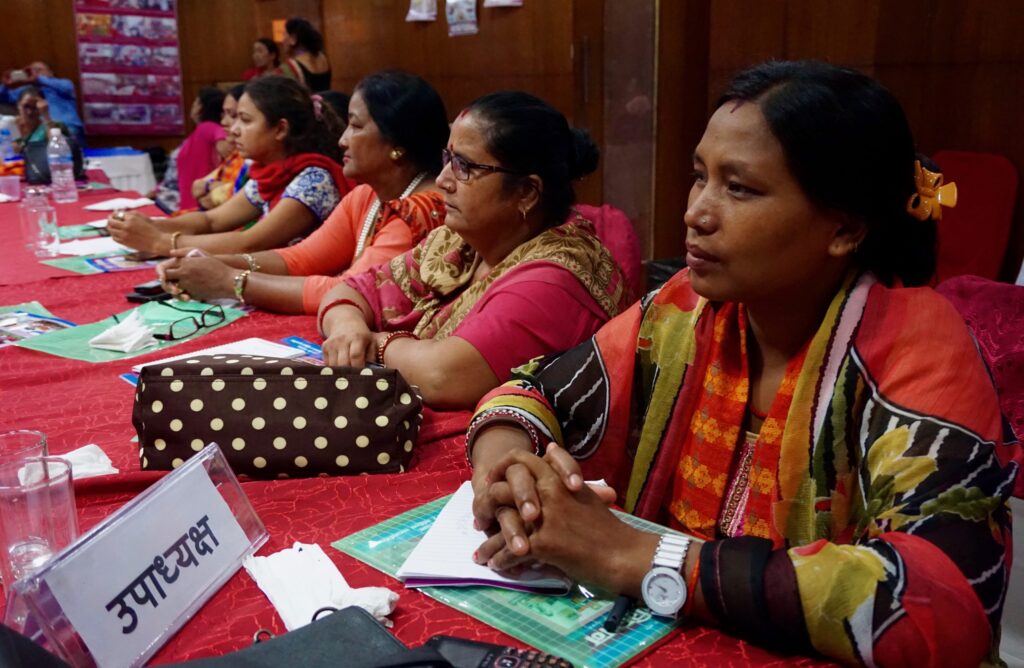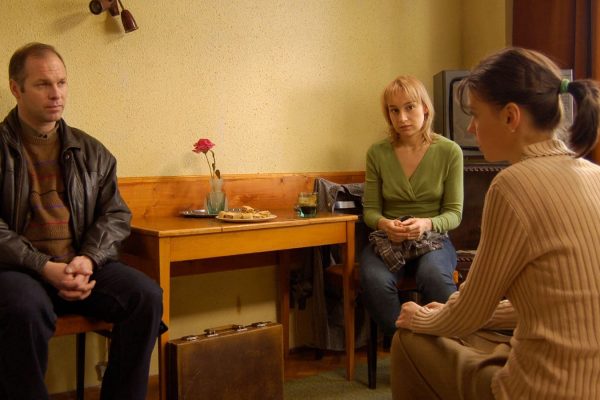Much has been written about the benefits of electing women to office. Scholars note links between women’s political representation and the stability of states, the likelihood of peace, the prioritization of social welfare programs, and even economic growth. In recent decades, a number of countries recovering from war have linked their constitutional and government overhauls with gender equality initiatives. Many now have higher rates of women in politics, largely as a result of these efforts. As we have explored in our past work, war can create unexpected opportunities to shift traditional power relations.
But it is equally important to recognize how interventions in the name of gender equality—such as quotas—can create new arenas for armed actors to extend their political influence. Consider Colombia, for example, which has seen record-breaking numbers of women elected to political office over the past decade thanks (in part) to a gender quota requiring that each party put forward at least 30 percent women. In the most recent election in one of the country’s conflict-affected northern regions, three women were elected to the local assembly: one represents a new indigenous political party, but two are linked to powerful, traditional political parties and families that were heavily involved in Colombia’s fifty-plus year armed conflict.
We should be wary of women’s political successes that mask other forms of exclusion and anti-feminist agendas. Too often, champions of women’s political representation have failed to see how policies aimed at women’s inclusion can advance other interests, including war, corporate power, ethno-nationalism, and capitalist projects. In countless settings around the world, women’s rights and gender equality have been used to shore up the power of certain groups. Such patterns can be particularly damaging in politically divided societies: women from dominant political factions are granted access to new opportunities, while women from marginalized groups are excluded.
Seemingly liberal gender reforms, such as gender quotas, can undercut more transformative efforts to dismantle other structures of inequality and gender oppression in two ways. First, they can present opportunities for elites to consolidate political power behind a veneer of democratic progress and under the approving gaze of international actors. In this scenario, women become a smokescreen behind which anti-feminist, undemocratic political agendas play out. And, second, they can inadvertently foment divisions between differently situated women, fracturing efforts to build feminist momentum around shared interests, and engendering backlash that can place individual women in the crossfire.
• • •
A closer look at Rwanda, Colombia, and Nepal highlights how gender quotas can be strategically deployed to pursue a politics of exclusion and marginalization.
The so-called rise of Rwanda’s women has garnered praise from champions of women’s rights, accolades from international organizations, and admiration from journalists. Rwanda has the world’s highest level of women in parliament at 61 percent, well above the constitutionally mandated 30 percent.
But these women disproportionately reflect a privileged linguistic minority within an ethnic minority. Their advancement has been coupled with the continued marginalization of Hutu women as well as francophone and rural Tutsi women. Moreover, Rwanda’s “achievement” in women’s political participation has helped advance an exclusionary political project. Reserved seats for women have allowed the ruling Rwandan Patriotic Front (RPF) to elevate its allies to positions of political power while gutting civil society and opposition movements. In particular, the quota has enabled President Paul Kagame to pursue and, importantly, to legitimize RPF dominance through a veneer of democratic progress. The promotion of women in Rwanda’s national parliament obscures extrajudicial assassinations and killings, the nearly complete stranglehold on political discourse and media, and the intolerance of dissent.
The limits of Rwanda’s promotion of women became particularly clear in the incarceration of Diane Rwigara, whose father, a prominent Rwandan businessman, died under mysterious circumstances in 2015. After demanding that the government investigate her father’s death, Rwigara announced that she would challenge President Kagame in the 2017 election. Rwigara was then placed under house arrest, charged with forgery and insurrection, and eventually imprisoned. She was released in 2018 in a batch of clemency acquittals, along with Victoire Ingabire, who had also attempted to challenge President Kagame before being imprisoned in 2010. Both cases serve as a warning that women’s access to politics is not always reflective of broader democratic access.
Similar patterns emerge in other countries that have prioritized women’s political representation. When Colombia’s war between the government and the Revolutionary Armed Forces of Colombia (FARC) came to a formal end in 2016, gender concerns featured centrally in the peace agreement, largely as a result of women’s advocacy during the peace negotiations. The agreement came on the heels of a series of progressive and democratic reforms, starting with the 1991 constitution, which outlined an ambitious agenda for building a gender-equitable society.
When the initial peace agreement went to a popular plebiscite, a critical narrative about “gender ideology” emerged in opposition to the agreement. Often articulated by traditional parties and the churches, this argument warned that the gender provisions in the agreement risked undermining the Colombian family. On the day of the vote, the “no” forces won, throwing the peace accord into doubt for several months until the government was able to formalize the agreement directly with FARC.
This agreement, drafted under President Juan Manuel Santos, was left to be implemented by his successor, Ivan Duque, a conservative. Instead of shying away from the gender provisions in the agreement, however, Duque appointed a “parity” cabinet—including female ministers of the interior, justice, and energy—along with a female vice president. In addition to gender parity at the highest levels, his administration created financial incentives for departments and municipalities that elect certain numbers of women, thus introducing material payoffs for standing women in competitive seats.
While seemingly a success for women’s rights, many of the women in the legislature are supported by far-right parties that have instrumentalized women’s political viability to consolidate influence. Reproductive rights are at the forefront of political debate in Colombia today, and many activists observe that the promotion of women with anti-rights agendas gives the right-wing political establishment cover in efforts to reject abortion outright while also presenting as woman-friendly.
Similarly, in local government, many women who pursue political careers are associated with powerful political families or illegal groups that have controlled regions of Colombia for decades. For example, Aida Merlano, a former Colombian senator who recently gained notoriety for escaping from custody and fleeing to Venezuela, was embedded in Los Char political family operations as a vote wrangler.
Gender activists in Nepal report similar stories. Following its decade-long war between the government and Maoist insurgents, Nepal’s 2015 constitution mandated that 40.4 percent of all parliamentary seats be reserved for women. In addition, political parties must field at least one female candidate for the post of either mayor or deputy mayor, and each ward—the smallest administrative unit—must include two women (and one Dalit). Women now constitute 40.9 percent of the country’s 35,041 local government representatives.
The quota has not only preserved access to power for high-caste, politically connected women, but has also become a proxy for asserting control over the Maoist party. In an effort to consolidate his influence and control over the party, Pushpa Kamal Dahal (known as Prachanda) and allies have used seats reserved for women to ensure their supporters retain control. At the local level, women’s seats and Dalit representatives offer a path to the consolidation of party-wide power and influence, and afford opportunities to freeze out those with competing visions of the Maoist project. One activist in the Terai told us that Maoist party officials came to every ward to appoint a Dalit woman. But they selected that woman not to represent the interests of the Dalit community, but to represent the interests of the party. Other parties have also adopted similar tactics.
The guise of emancipation and democratic progress can not only help consolidate factional interests, it can also serve to undermine equality and intersectional empowerment. Take social activists in Colombia: after gaining support for women’s, Afro-Colombian, indigenous, and LGBTI rights, a “staggering number” of women activists have been killed while advancing environmental justice and defending human rights in their communities.
This is too common an experience for women entering new political spaces. In Kenya, for instance, a recent gender quota has ushered in a new wave of female candidates who have been met with verbal, material, and physical violence. And in Rwanda and Bosnia, evidence suggests that women who have been most aggressive in asserting the new rights granted to them after war faced a patriarchal backlash, often in the form of violence.
Inclusion can thus have the effect of fracturing civil society, limiting democratic participation, and curtailing the ability of civil society to serve as a counterweight to the authoritarian tendencies of dominant groups. Political incentive structures designed to improve rights in one area may ultimately undermine them in other ways, weakening the transformative potential of the gains and strengthening other forms of oppression. This is particularly damaging in postwar societies, which have been some of the earliest adopters of quotas, and where continued identity-based division can sow the seeds for resurgent violence.
• • •
Support for women’s political representation is crucial for advancing democratic values, particularly amidst a global rise of right-wing populism and gender-regressive regimes. Representation matters, and in a world too often dominated by male elites, seeing women in masculine-dominated spaces is refreshing and important. Youth who see women in leadership positions grow up thinking of that as normal, and new norms are important for building more equitable democracies.
But normative shifts are not structural. This distinction is germane as we celebrate the hundredth anniversary of the Nineteenth Amendment, which eliminated gender barriers to voting in the United States. As we consider what political projects were made possible by the amendment, we must also acknowledge its variable consequences for women from different racial, ethnic, religious, and class backgrounds. The popular narrative of the suffrage movement in the United States is a whitewashed history that has silenced the contributions of black suffragists while also obscuring the links between white supremacy and feminism. The ratification of the Nineteenth Amendment, as historian Liette Gidlow put it, “advanced equality between the sexes but left intersecting inequalities of class, race, and ethnicity intact.”
Elevating some women over others who suffer continued oppression can foment division and jeopardize efforts to build feminist momentum around shared interests. In the United States, for example, the backlash against black women who attempted to access the vote exemplify the new forms of violence that can be unleashed when reforms address one form of inequality without attention to intersecting forms of oppression. White suffragists abandoned longstanding alliances with black activists and abolitionists to expediently secure political power for white women. After the Nineteenth Amendment was ratified, many black women who attempted to vote were turned away, subjected to humiliating “literacy tests,” and even assaulted.
In considering the impact of a hundred years of women’s suffrage in the United States, it is incumbent on us to reflect on how emancipatory and gender-progressive reforms provide a canvas upon which exclusionary and counter-feminist agendas play out. In Colombia, efforts to secure women’s political inclusion have legitimized capitalist projects linked to the militarized export economy. In Rwanda, these efforts have entrenched an authoritarian regime that widely suppresses freedom of expression and democracy. In Nepal, these efforts have appeased international advisors while facilitating the continued dominance of particular caste, regional, and class interests. In all of these cases, and elsewhere, the means of securing women’s inclusion have reaffirmed the patriarchal, capitalist systems responsible for inequality and injustice in the first place.
Is there another option? Many champions of women’s political representation and gender quotas will acknowledge the limitations of such initiatives, but will dismiss our argument on the grounds that such interventions are stepping-stones on the path to more equitable gender representation—essential first steps in constrained sociopolitical and economic contexts. We are sympathetic to this perspective but contend that only movements rooted in the communities of the most marginalized can generate a genuinely transformative reallocation of power. Any political project that does not look first to those most excluded promises to guard hierarchical structures of power and entrench existing privilege. And gender innovations that reinforce interlocking forms of market, class, and ethnic dominance will only ever serve to preserve rather than undermine patriarchal power.








